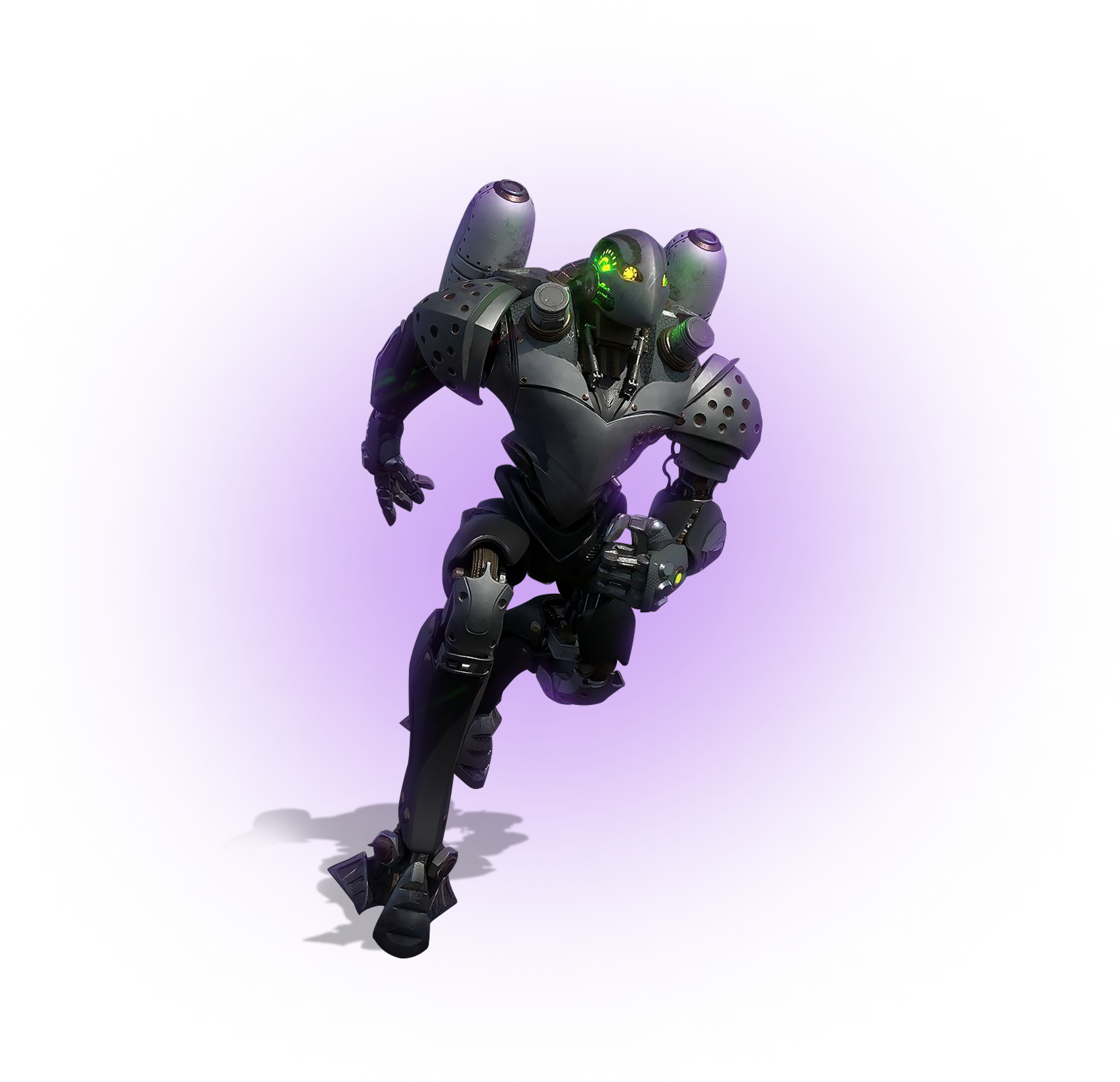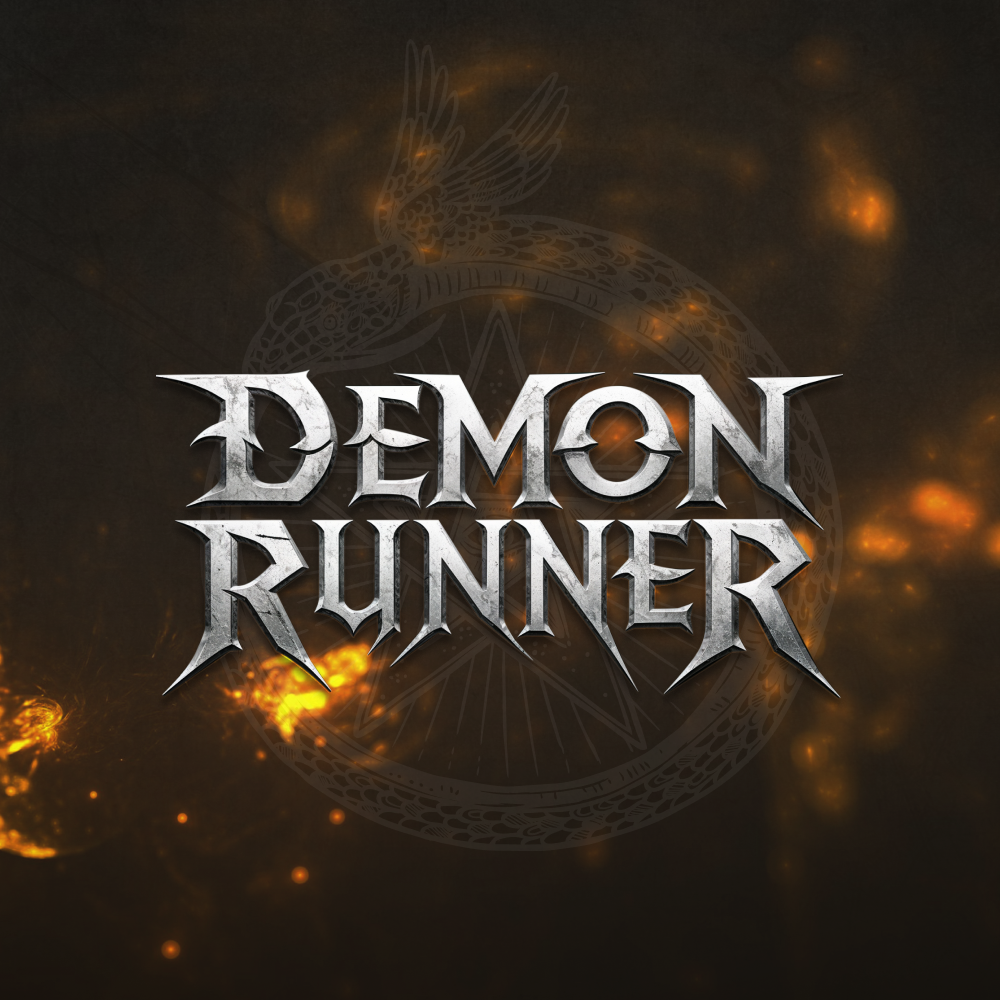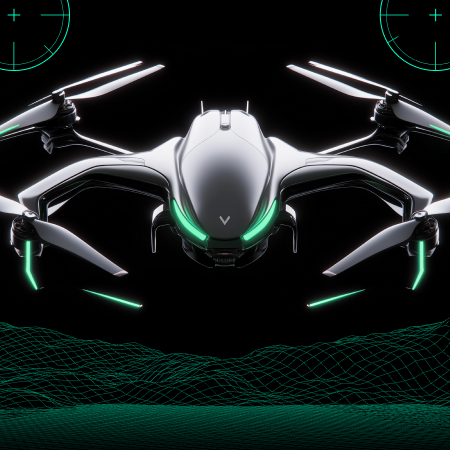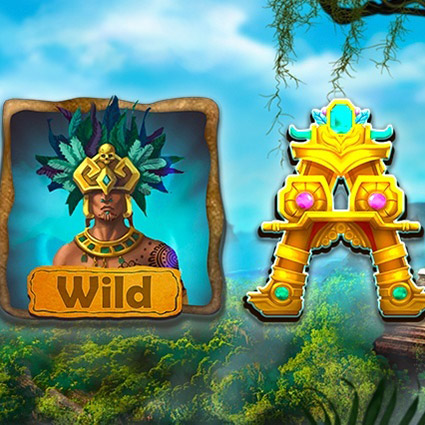The advent of Web3 is reshaping our digital interactions, introducing a new dimension of decentralization through blockchain, cryptocurrencies, and NFTs. This transformation is profoundly impacting the gaming sector. As a pioneer in adopting cutting-edge technologies, the gaming industry is now embracing the burgeoning field of Web3 gaming, a development that opens up a host of new possibilities and challenges.
What sets Web3 gaming apart from traditional gaming experiences? This is a pivotal question for any Web3 game development company venturing into this new territory. Web3 gaming apps and platforms integrate blockchain technologies to offer decentralized, player-centric experiences where ownership and control lie significantly in the hands of the players themselves. This shift represents a fundamental change in how games are designed, developed, and interacted.
In understanding what Web3 gaming is, it's essential to recognize its potential to revolutionize the gaming landscape. A Web3 game platform isn't just about introducing blockchain into gaming; it's about creating a new ecosystem where players have real ownership of in-game assets and the gaming experience is more interactive, immersive, and player-driven. This new era in gaming, propelled by Web3, is redefining the boundaries and possibilities of the gaming world.
To navigate this new terrain, Game-Ace has compiled vital information. Their resources aim to provide a comprehensive understanding of Web3 gaming, outlining the unique aspects, technological requirements, and value propositions of these games. They offer insights into the nuances that differentiate Web3 games from traditional ones and the technological stack essential for success in this domain. This information is invaluable for anyone looking to explore or understand the rapidly evolving landscape of Web3 gaming.
What Is Web3 Gaming?
Web3 games, built on the innovative foundation of blockchain technology, represent a seismic shift in the gaming industry. These games enable players to achieve actual ownership of their in-game assets, a feature facilitated through non-fungible (NFTs) or fungible tokens.
These aspects of Web3 gaming are a critical turning point, distinctly setting it apart from traditional Web2 games. In Web3 games, players are not just participants but become stakeholders in the gaming universe, owning and controlling assets that were previously intangible and non-transferable.
In the conventional gaming world, the concept of ownership is largely symbolic. Players, under the constraints of copyright laws, do not truly own any game elements. Everything from characters to items belongs to the game's developers or publishers. Players, in essence, acquire only a license to interact with these assets, devoid of any substantial control or ownership. This limitation is where Web3 gaming introduces a revolutionary change.
Web3 technologies redefine player interaction by granting genuine ownership of in-game assets. This capability allows users to acquire, trade, sell, or collect these assets without fear of intervention from game developers or other entities. What is Web3 gaming, if not a paradigm shift in the digital ownership and control within games? This newfound freedom is not just about possession; it's about empowerment and creating a personal stake in the gaming world.
Moreover, the decentralized nature of blockchain, a cornerstone in all Web3 gaming development, enables a level of interoperability previously unseen. Gamers can now utilize their assets across different Web3 games and platforms, breaking down barriers between games and fostering a new, interconnected digital economy. This interoperability is a significant attribute of what are Web3 games, as it allows for a more seamless and integrated gaming experience.
Players engaging with a Web3 gaming app can expect their experience and assets to have relevance and utility across multiple gaming platforms, further enhancing the value and appeal of Web3 gaming. This shift not only transforms how games are played but also how they are perceived in the broader context of digital interaction and economy.
Different Types of Web3 Games

1) The play-to-earn (P2E) model in Web3 gaming is revolutionizing how gamers interact with digital platforms. In these games, participation leads to earning digital rewards, ranging from cryptocurrencies to NFTs. The gaming structure usually includes a variety of quests or tasks, with the rewards system designed to increase as players invest more time in the game.
The cornerstone of P2E games within all Web3 gaming development is the principle of decentralization. This approach ensures that game developers do not hold control over the in-game assets. Instead, the players create and own these assets, marking a significant shift from traditional gaming power dynamics.
Starting a P2E game journey necessitates the purchase of crypto tokens, which act as a gateway to these immersive gaming experiences. Notable games in this sector, such as RobotEra, Calvaria, Tamadoge, Lucky Block, and Axie Infinity, are leading examples of how Web3 gaming is integrating new economic models into digital entertainment.
These games provide entertainment and offer players the opportunity to be part of a digital economy where their gaming efforts are rewarded with real-world value. This innovative approach is a defining feature of Web3 gaming, setting it apart from traditional gaming experiences and aligning it with the latest trends in digital interaction and economy.
2) Walk-to-earn games, a novel concept within the Web3 gaming universe, merge physical activity with digital rewards, offering a unique approach to gaming. In these games, players are incentivized to engage in real-life movements, such as walking, running, or other forms of exercise, to gain in-game assets.
This fusion of physical activity and digital gaming aligns perfectly with the ethos of Web3 gaming, which emphasizes innovation and user engagement. The rewards earned through these activities often come in cryptocurrencies, which players can convert to fiat currencies or utilize for in-game purchases. This feature enhances the gaming experience and introduces a new dimension to in-app economies.
The games Walken and STEPN are leading examples in this category, demonstrating the potential of integrating real-world activities with the digital gaming world. This integration is a hallmark of Web3 gaming, pushing the boundaries of traditional gaming and offering players a more holistic and engaging experience.
By rewarding players for real-world physical activities, these games underscore the growing trend in the gaming industry towards more interactive and health-conscious experiences. This approach encourages physical activity and deepens the connection between the virtual and the real world, a core principle of Web3 gaming.
In this innovative gaming model, the focus is not just on virtual achievements but also on promoting healthier lifestyles. This strategy exemplifies the expanding scope of gaming, where the digital and physical realms converge, creating a more immersive and rewarding experience for players.
Contact us for more information about web3 game development.
Key Features of Web3 Games
Web3 games offer new approaches to the world of gaming. The cutting-edge technologies combined with the determination to reinvent gaming experiences create a set of new features that have already become typical for Web3 gaming.
1. Ownership
Web3 gaming is redefining the concept of asset ownership. Integrating blockchain and NFT technologies is a fundamental element in all Web3 activities on the internet, profoundly impacting how players interact with and value their in-game assets. In Web3 gaming, when players obtain full ownership of assets they have purchased or generated within a game, they unlock the potential to maximize the value derived from these assets.
What does this shift entail? In the era of Web2 gaming, in-game items such as ammunition, weapons, or skins held value only within the confines of the specific game. However, with the advent of Web3, the scenario undergoes a significant transformation. Web3 gaming transcends the limitations of single-platform utility.
For instance, when players receive a unique in-game reward in the form of an NFT, they have the flexibility to transfer it to other Web3 gaming platforms or even broader metaverse environments. Additionally, these assets can be traded on specialized marketplaces that operate with cryptocurrency, further enhancing their liquidity and market value.
This paradigm shift in Web3 gaming signifies a profound change in the perception and utility of in-game assets. What were once mere virtual objects with limited and often debatable value in the Web2 framework transform into assets with tangible financial worth in the Web3 gaming world. NFTs backed by real-world value not only enrich the gaming experience but also establish a new economic model within the gaming industry.
This evolution in Web3 gaming is indicative of a broader trend in the digital space, where virtual assets acquire real-world significance, blurring the lines between digital entertainment and economic reality. Web3 gaming, therefore, stands at the forefront of this digital revolution, offering players a gaming experience and a stake in a new, decentralized digital economy.
2. Transparency
Blockchain technology plays a pivotal role in ensuring transparency and fairness in every aspect of gaming. By providing an equal amount of data to every user, blockchain establishes a level of transparency critical in modern gaming. This transparency brings two significant advantages to the realm of Web3 gaming.
Firstly, it acts as a guarantee of fairness within the game, ensuring that the gaming environment remains untampered and free from cheating. This aspect of Web3 gaming is vital in maintaining the integrity of the game and fostering a competitive yet fair environment.
Secondly, the importance of transparency cannot be overstated in the context of the advanced digital economy that Web3 gaming is part of. Efficient operations in this economy demand a high degree of transparency. In Web3 gaming, this transparency serves to equalize players and developers, allowing all parties involved to monitor the game's progress and any changes that occur easily.
Finally, this open and transparent approach lays the foundation for complete trust in the integrity of the game, a key element in attracting high-skill players. These players often selectively choose their gaming platforms based on the fairness and transparency offered, a hallmark of Web3 gaming. Web3 gaming, therefore, stands at the intersection of technology and trust, leveraging blockchain to create an engaging, immersive, transparent, and equitable gaming environment.
This transparency is not just a feature but a cornerstone of the Web3 gaming experience, essential in shaping the relationship between players, developers, and the game itself. Wherever digital economies and player engagement are paramount, the transparency provided by Web3 technologies is a game-changer, redefining the standards and expectations of gaming enthusiasts worldwide.
3. Decentralization
Decentralization is a fundamental feature of the Web3 ecosystem, profoundly impacting the gaming industry. In Web3 gaming, decentralization translates to enhanced immersion for players. It empowers them with greater freedom of action and the ability to derive tangible benefits directly from the game, bypassing the need for third-party intermediaries. Precisely this aspect of Web3 gaming is a significant shift from the Web2 gaming model, where control and authority predominantly reside with developers and publishers.
Players gain increased power, breaking free from the constraints that characterized Web2 games. This shift towards democratization in gaming is particularly appealing to a community that values autonomy, fairness, and independence. It opens up new avenues for an NFT game development company to engage with a broader and more diverse audience. These players are not just looking for entertainment but are also interested in games that offer them a stake in the game's world and economy.
So this democratization is not just a trend but a paradigm shift in the gaming industry, underpinned by the principles of Web3. It signifies a move towards a more player-centric model, where the interests and rights of players are placed at the forefront.
For gaming companies operating within the Web3 framework, this represents a unique opportunity to tap into a market of discerning players attracted to platforms that offer more than just gameplay — they offer a sense of ownership and participation in the game's universe. In summary, Web3 gaming is reshaping digital entertainment, offering a new level of engagement, empowerment, and economic opportunity for players and developers alike.
4. Decreased Downtime and Enhanced Scalability
One of the most significant advantages of Web3 over traditional Web2 gaming is the drastically reduced downtime. The decentralized nature of Web3 games, which operate on blockchain technology, eliminates the reliance on a central system that could fail and require maintenance or intervention from a central authority. This key attribute of Web3 gaming not only enhances the player experience by providing uninterrupted gameplay but also ensures higher reliability and stability in gaming platforms.
Moreover, the underlying blockchain technology in Web3 gaming facilitates block minting and utilizes high-capacity data storage facilities. This technical framework allows for easy scalability and expansion of Web3 games. Such scalability is crucial in the rapidly evolving gaming industry, where the ability to adapt and grow is vital. This feature of Web3 games represents a paradigm shift in how games are developed and managed, offering a more dynamic and flexible approach compared to the more static nature of traditional Web2 games.
For an NFT game development company, these characteristics of Web3 gaming open up a plethora of opportunities. The reduced downtime and scalability mean that these companies can create and maintain games that are not only more robust and reliable but also capable of evolving and expanding to meet the growing demands of the gaming community.
A similar technological advancement in Web3 gaming is setting new standards in the industry, pushing the boundaries of what is possible in digital entertainment and offering players a richer, more seamless gaming experience. In the broader context, Web3 is reshaping the gaming landscape, introducing a new era of digital interaction where reliability, scalability, and player empowerment are at the forefront.
5. Integration with Old Games
Web3 games transcend the boundaries of merely introducing new concepts and revolutionize traditional, old-school games. Thanks to advanced technologies, even classic games can be rejuvenated and seamlessly integrated into the metaverse environment by any metaverse game development company. This integration signifies a blend of the familiar and avant-garde, offering a fresh perspective on beloved classics.
The revamping of old gaming models goes hand in hand with a push towards decentralization. Such a shift allows players within the Web3 environment to interact with and personalize elements of their favorite games in both the metaverse and Web3 contexts. This evolution in gaming not only breathes new life into vintage titles but also empowers players, turning them from mere participants into active architects of their gaming experience.
The transition of traditional games into the realms of the metaverse and Web3 exemplifies the revolutionary nature of Web3 gaming. It melds the nostalgia of classic gaming with the possibilities of modern technology, creating a hybrid gaming experience that appeals to both long-time enthusiasts and new players. For the gaming community, this means an enriched, multifaceted experience where the past and future of gaming converge.
For developers, particularly in the metaverse game development sector, it opens up a world of possibilities to reimagine and reshape classic games with the innovative tools provided by Web3. Ultimately, Web3 gaming is not just an evolutionary step but a transformative movement, redefining the landscape of digital gaming and reshaping how we engage with and perceive games.
6. Player-driven Experience
The evolution within the Web3 gaming sphere is culminating in a player-driven experience, a significant departure from traditional gaming paradigms. In Web3 games, users have unprecedented freedom to shape their gaming experiences according to their preferences and desires. Such a level of autonomy allows players to make critical decisions, earn monetary rewards, and seamlessly transfer assets across diverse environments, effectively placing them in control of the gaming processes.
Such a shift in Web3 gaming is not just an incremental change; it represents a monumental turning point for the entire gaming industry. Web3 introduces a landscape with novel opportunities that benefit gamers and developers alike. For gamers, Web3 gaming offers a platform where their choices and actions have real-world implications, blurring the lines between virtual gaming and tangible outcomes. This aspect of Web3 gaming elevates the gaming experience, making it more immersive, interactive, and rewarding.
For developers within the Web3 gaming domain, this shift opens up new vistas for innovation and creativity. The focus on player-driven experiences in Web3 gaming compels developers to think beyond conventional game design, considering more intricate player interactions and engagement strategies. Web3 gaming, emphasizing decentralization and player empowerment, redefines what games can be and how they are experienced.
It's creating a new era in digital entertainment, where the players are not just consumers but active participants and creators within the gaming universe. In essence, Web3 gaming is transforming the gaming landscape, ushering in a new age where gaming is not just a pastime but a dynamic and interactive platform for engagement, creativity, and economic activity.
What Is the Technology Stack of Web3 Gaming?
When talking about Web3 gaming capacities, it is important to talk about the crypto tech stack that makes all the top features possible.
Web3 dApps
DApps are running on a decentralized peer-to-peer network, allowing developers and players to interact with blockchain platforms. They power up in-game transactions and assets.
Smart Contracts
Smart contracts are self-executing programs that ensure that the terms of the agreement running on a blockchain are followed. In the context of Web3 gaming, they govern various game processes and are used by players in voting for a change to be introduced to the game.
Digital Wallets
Players need accounts to store the items they acquire while playing the game, and blockchain-based digital wallets play this role. Every gamer receives a personalized wallet address.
XR Hardware
Extended Reality (XR) is a general term for a set of technologies known as AR, VR, and MR, which offer an immersive experience of different levels of deepness. XR allows users to truly dive into the gaming world in real-time and open new interactive capacities.
Node/Web 3 Providers
Nodes are vital parts of blockchain-powered platforms, as they are designed to read and process data stored in blockchain networks. It is essential for the usage of cryptocurrencies in Web3 gaming.
Open Media Standards
The Web3 gaming concept implies enhanced interoperability, which creates a need for common standards for media text, audio, video, 3D elements, and other objects to ensure that platforms can co-exist in one environment.
Future of Web3 Gaming
Web3 gaming is still in its nascent stage, and 2022 was a rough patch for all Web3-related projects due to reduced popularity and decreased investments. Still, some projects managed to win the loyalty of users and investors, proving that Web3 gaming will only grow further, even if not at such a fast pace.
While the potential of Web3 games looks highly prominent, they are still far from mainstream adoption: only 12% of gamers have even tried Web3 games. The majority of Web3 players are aiming for earning cryptocurrency rather than seeking an immersive gaming experience.
This is definitely an issue for the gaming community: while the main motivation remains connected to earning profits, there is almost no challenge to go deeper into Web3 game development and leverage advanced storytelling with Web3 technologies.
However, Web3 gaming environment is starting to experience a surge of true gamers who are there for rich experiences, interactions, community, as well as breakthroughs in visuals and stories.
The border between Web2 gamers and Web3 games is breaking, mainly thanks to fully-fledged Web3 games that can compete with top Web2 games like Counter-Strike or Dota2. Such projects have given a significant boost to the Web3 gaming industry, demonstrating that there is an audience interested in exploring Web3.
The investments poured into Web3 games also give proof that the industry will keep only flourishing: for example, the industry managed to raise over $750m during August-September 2022.

Enter the Web3 Gaming World With the Help of Game-Ace
As you can see, Web3 gaming is still in an evolving state and is far from revealing its maximum potential. A new stage of development in the industry is happening due to the inflow of Web2 gamers, meaning that there is a new set of opportunities for game developers to tap into growing audiences.
While the Web3 gaming market is still undersaturated with quality entertaining games that truly unite the earn-to-play model and the best practices of Web2 games, it is a good moment to claim your market share and make a name for your company as a prominent Web3 game developer.
Game-Ace as a top game creation studio can guide you through the main aspects of Web3 game development and help you conceptualize the final vision of your game. Contact us to get an estimation for your project and discuss the ways of our beneficial cooperation.
 What Are NFT Games? — Meanings, Insights, Forecasts
What Are NFT Games? — Meanings, Insights, Forecasts  How Do NFT Games Work? Common Questions Answered
How Do NFT Games Work? Common Questions Answered  Top Web3 Gaming Companies That Will Help You Enter the Web3 Market
Top Web3 Gaming Companies That Will Help You Enter the Web3 Market  NFT Game Developers Crafting Virtual Realms
NFT Game Developers Crafting Virtual Realms  Types of NFT Games You May Want to Create
Types of NFT Games You May Want to Create 


































